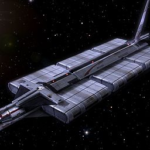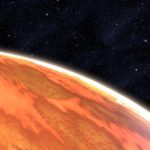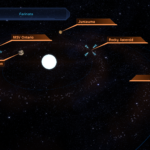System Specs:
- Stellar Mass: 17.779 Sol Masses
- Stellar Class: B
- Luminosity: N/A Sol
- Planets: 3
- Moons: 0
- Asteroid Belts: 2
- Asteroids: 1
- Objects: 1
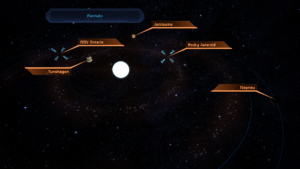
It is probably named for Farinata degli Uberti and is probably a reference to Dante’s Inferno, the first canticle of his Divine Comedy. In the Divine Comedy, Dante speaks with Farinata in the sixth circle of Hell.
–
Planets Directory:
- Tunshagon
- asteroid belt
- MSV Ontario
- asteroid belt
- Juntauma
- Nepneu
–
Tunshagon:
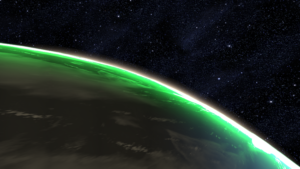
- Orbital Distance: 5.65 AU
- Orbital Period: 3.2 Earth-years
- Keplerian Ratio: 17.613
- Radius: 42,418 km
- Day Length: 9.1 Earth-hours
- Atmospheric Pressure: N/A atm
- Surface Temp: N/A °C
- Surface Gravity: N/A g
- Mass: N/A Earth-masses
- Satellites: 7
Tunshagon is a hydrogen-helium gas giant with traces of chlorine and nitrogen in its atmosphere. It has an unusually small number of moons for a gas giant; a mere seven. This is likely due to the star Farinata capturing the majority of the mass during the nebular collapse that created the system.
Properties
Tunshagon is too small and hot to be a “standard hydrogen-helium gas giant” (William Hubbard, The New Solar System 4th ed, 1999; p. 194). In addition its near 18 sol-mass star means that even “ice giants” of this radius are impossible (due to Farinata’s young age and heat). Tunshagon is more likely a super-terrestrial protoplanet.
–
MSV Ontario:
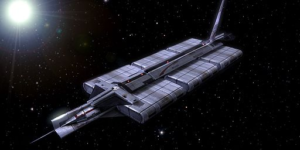
The Ontario is a Kowloon class modular conveyor of human design, configured for mixed freight and passenger hauling. It is making a hard burn for the cover of an asteroid cluster.
Registry: Private Owner, Citadel Station
–
Juntauma:
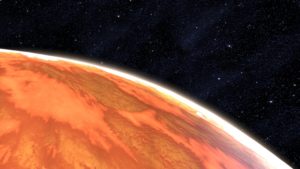
- Orbital Distance: 57.05 AU
- Orbital Period: 102.0 Earth-years
- Keplerian Ratio: 17.847
- Radius: 4,227 km
- Day Length: 102.0 Earth-hours
- Atmospheric Pressure: 0.36 atm
- Surface Temp: 1,176 °C
- Surface Gravity: 0.38 g
- Mass: 0.166 Earth-masses
Juntauma is a small, broiling terrestrial world. Its thin atmosphere of carbon dioxide and ethane is being steadily “blown off” by the powerful solar wind from the star Farinata. The surface is scorching hot, and mainly composed of sulphur with deposits of copper. Its density is low enough to leave the world tidally locked to Farinata.
The Alliance Defense Data Network notes that several ships have been spotted cruising near Juntauma with transponders turned off. While an Alliance patrol attempted pursuit of one, the unidentified vessel “rabbited” to FTL. Its trail was lost when it obscured its light trace in the confusion of signals along the Anansi-Ishtar shipping lane.
Survey Text
“Scans of Juntauma revealed a derelict freighter in mid-stage orbital decay. Your salvage team boarded the vessel and determined it had been attacked by raiders. There was little of value still on board, but the team did find a Prothean data disc.”
–
Nepneu:
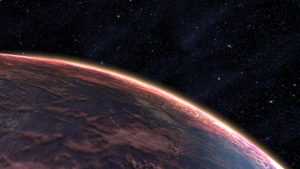
- Orbital Distance: 117.7 AU
- Orbital Period: 302.0 Earth-years
- Keplerian Ratio: 17.878
- Radius: 3,742 km
- Day Length: 30.1 Earth-hours
- Atmospheric Pressure: 0.23 atm
- Surface Temp: 848 °C
- Surface Gravity: 0.27 g
- Mass: 0.092 Earth-masses
- Satellites: ≥ 1
With a rare combination of features, Nepneu is of particular interest to the scientific community. Nepneu is a small terrestrial planet, with a thin atmosphere of carbon dioxide and krypton. As with all the worlds of Farinata, its surface is scorching hot. The crust mainly consists of silicates laced with iron.
–
–


